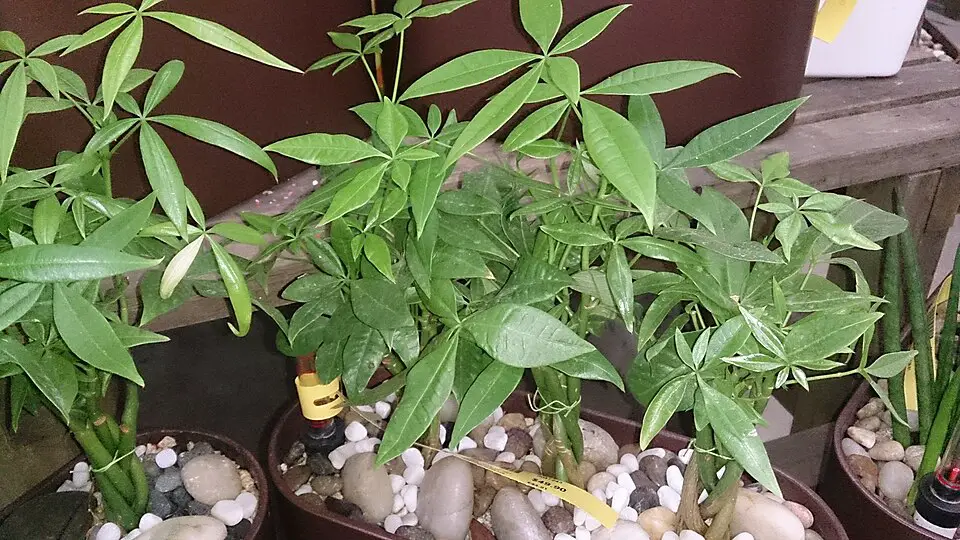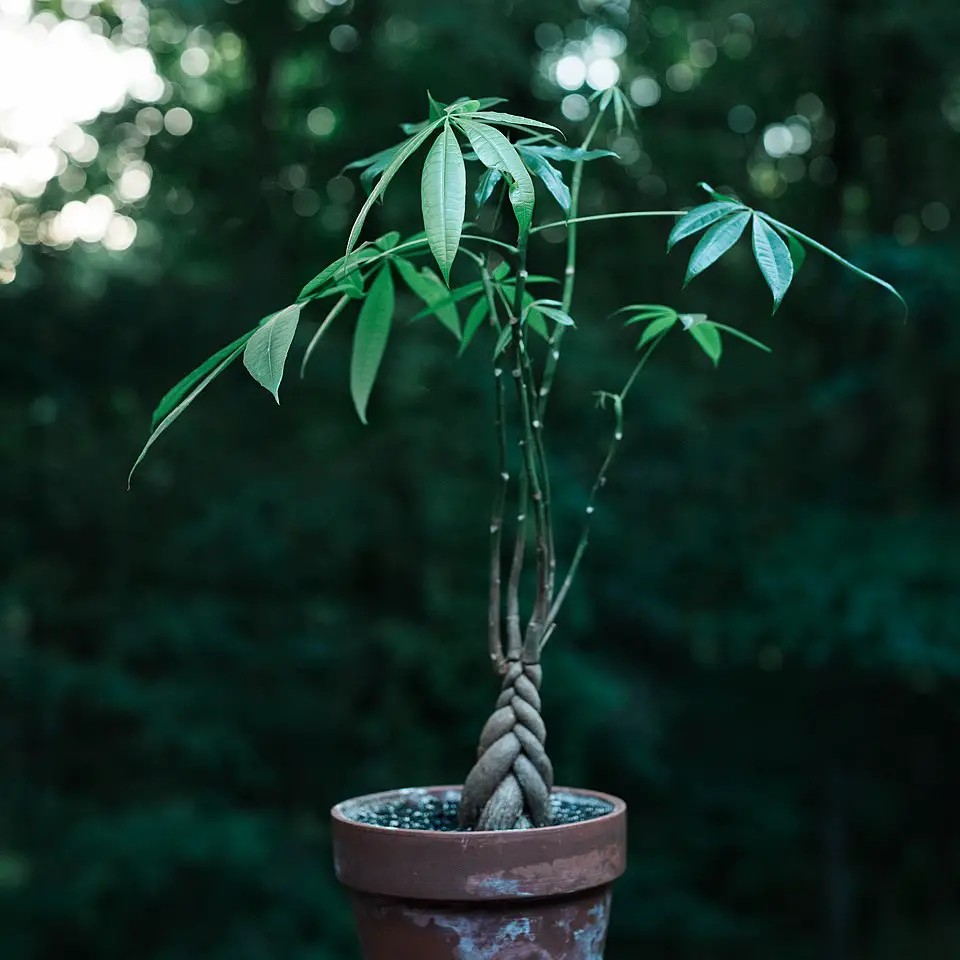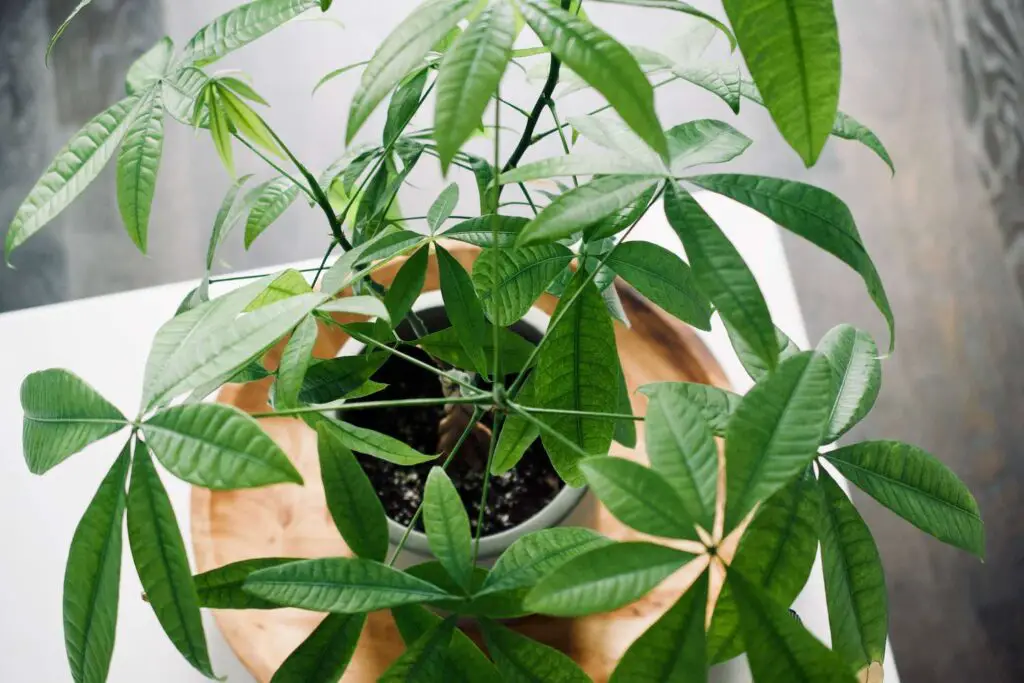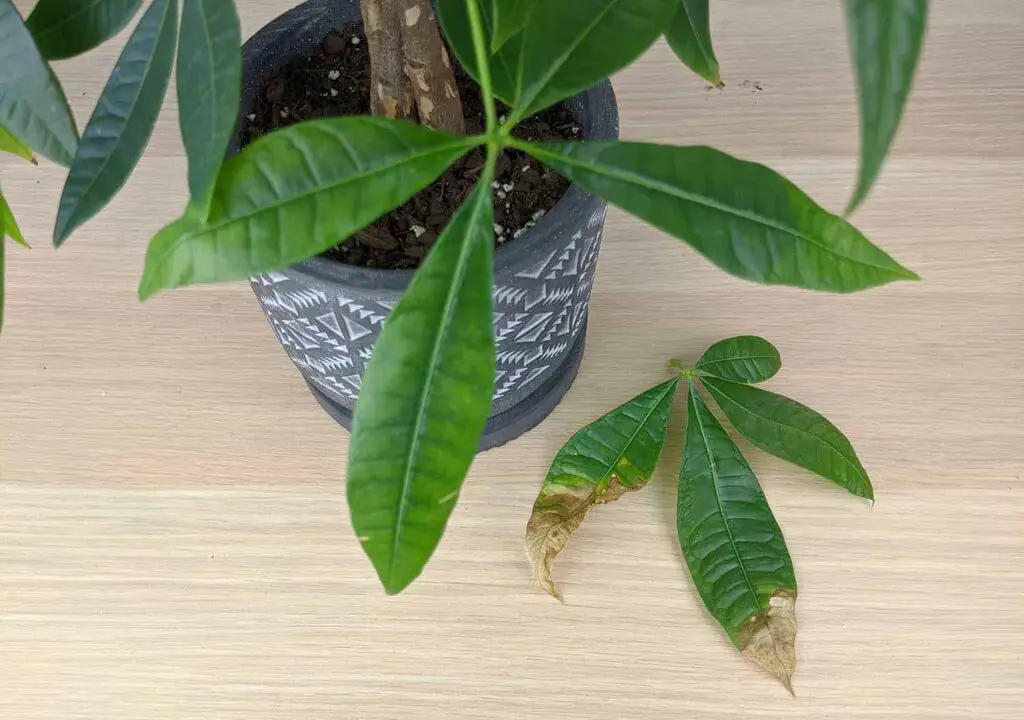To prune a money tree for better growth, start by removing any dead or unhealthy leaves and stems. Trim back leggy growth to encourage bushier growth. Use clean, sharp pruning shears and make cuts just above a leaf node. Regular pruning helps maintain the plant’s shape and promotes overall health.
Understanding the Money Tree
The money tree, or Pachira aquatica, is a popular houseplant known for its braided trunk and lush green leaves. It is believed to bring good luck and prosperity in various cultures. Native to Central and South America, this plant thrives in warm, humid environments. Understanding its natural growth patterns is essential for effective pruning.

Money trees can grow quite tall, reaching up to 6 feet indoors. However, regular pruning helps to control their height and shape. By trimming the plant, you can promote healthier growth and enhance its aesthetic appeal. Knowing the right time and technique for pruning is crucial for your money tree’s success.
When to Prune Your Money Tree
Timing is important when it comes to pruning a money tree. The best time to prune is during the growing season, typically in spring or early summer. At this time, the plant is actively growing and can recover quickly from pruning.
Pruning during dormancy in the fall or winter can stress the plant, slowing down its natural growth process. It is essential to observe your money tree for signs that indicate it needs pruning. Look for:

- Yellowing or brown leaves
- Leggy or sparse growth
- Overcrowded branches
- Dead or diseased stems
Tools Needed for Pruning
Before starting the pruning process, gather the necessary tools to ensure a clean and effective job. The following tools are recommended:
- Sharp pruning shears: Ensure that your shears are sharp to make clean cuts.
- Gardening gloves: Protect your hands while handling the plant.
- Rubbing alcohol: Use it to disinfect your tools before and after use to prevent disease transmission.
- A clean cloth: This can be used to wipe your tools and ensure they remain clean.
Steps to Prune Your Money Tree
Now that you have the right tools and knowledge about your money tree, follow these steps to prune effectively:
- Inspect the plant: Look for any dead, damaged, or unhealthy leaves and stems.
- Disinfect tools: Wipe down the blades of your pruning shears with rubbing alcohol.
- Start with dead leaves: Remove any yellowing or brown leaves first. Cut them at the base where they meet the stem.
- Trim leggy growth: Identify any long branches that are not producing leaves. Cut them back to promote bushier growth.
- Shape the plant: Step back frequently to assess the overall shape of the tree. Make adjustments as needed for a balanced appearance.
- Clean up: Collect all pruned material and dispose of it properly to prevent pests.
Benefits of Pruning
Regular pruning offers several benefits that enhance the growth and health of your money tree:

- Encourages bushier growth: Trimming back long branches promotes new shoots.
- Improves air circulation: Removing overcrowded foliage allows for better airflow.
- Enhances light exposure: Pruning opens up the canopy, enabling all parts of the plant to receive adequate sunlight.
- Prevents disease: Removing dead or diseased parts helps maintain overall plant health.
By following these guidelines, you can ensure that your money tree thrives and continues to grow beautifully in your home. Regular maintenance through pruning will not only improve its appearance but also contribute to its longevity.
Common Mistakes to Avoid When Pruning
While pruning is beneficial for your money tree, there are common mistakes that many people make. Being aware of these pitfalls can help you achieve the best results.
- Over-pruning: Cutting too much foliage at once can shock the plant and hinder its growth. It is better to remove a small amount and assess the plant’s response before making further cuts.
- Pruning at the wrong time: As mentioned earlier, pruning during the plant’s dormant season can be detrimental. Always aim to prune during the growing season.
- Using dirty tools: Not disinfecting your shears can introduce diseases to your plant. Always clean your tools before and after use.
- Ignoring the plant’s shape: Failing to consider the natural shape of the money tree can result in an unbalanced appearance. Prune in a way that enhances its natural form.
- Neglecting to remove dead leaves: Leaving dead or diseased foliage on the plant can attract pests and diseases. Regularly check and remove any unhealthy parts.
Signs Your Money Tree Needs Pruning
Recognizing the signs that your money tree needs pruning is essential for maintaining its health. Here are some indicators to watch for:
- Leggy growth: If you notice long, thin branches with few leaves, it is a sign that the tree needs to be pruned back. This will encourage denser growth.
- Yellow or brown leaves: Discoloration can indicate stress or disease. Pruning these leaves can help the plant focus its energy on healthier parts.
- Overcrowding: If branches are crossing each other or there is excessive foliage, it is time to trim back to allow for better air circulation.
- Pest infestation: If you spot pests such as spider mites or aphids, pruning affected areas can help control their spread.
Techniques for Effective Pruning
Understanding different pruning techniques can enhance your ability to shape and care for your money tree. Here are some effective methods:

1. Thinning
This technique involves selectively removing branches to improve light penetration and air circulation. It helps maintain the overall health of the plant.
2. Heading Back
This method involves cutting back a stem or branch to a bud or junction with another branch. Heading back encourages bushier growth and is useful for controlling height.
3. Pinching
Pinching involves using your fingers to remove the tips of new growth. This encourages branching and results in a fuller plant.
Aftercare Post-Pruning
Once you have finished pruning your money tree, providing proper aftercare is vital for recovery and new growth. Here are some tips:
- Watering: Ensure that your plant receives adequate water after pruning, but avoid overwatering. Allow the top inch of soil to dry out before watering again.
- Fertilizing: After a month or so, consider applying a balanced, water-soluble fertilizer to support new growth.
- Humidity: Money trees thrive in humid environments. If your home is dry, consider misting the leaves or placing a humidity tray nearby.
- Monitoring: Keep an eye on your plant for any signs of stress or pest issues after pruning. Early intervention can prevent more significant problems.
Understanding Growth Patterns
A money tree grows through a combination of leaf development and stem elongation. Understanding how these patterns work will guide your pruning practices:
| Growth Phase | Characteristics | Pruning Focus |
|---|---|---|
| Active Growth | New leaves and stems are developing rapidly. | Encourage bushiness by trimming back leggy growth. |
| Resting Phase | Growth slows down significantly during this time. | Minimal pruning; focus on removing any dead parts only. |
By understanding these growth patterns, you can tailor your pruning strategy to align with your money tree’s needs, ensuring optimal health and vitality.
2>Advanced Pruning Techniques for Money Trees Once you have mastered the basics of pruning your money tree, you may want to explore more advanced techniques to enhance its growth and appearance. These methods can be particularly useful for experienced gardeners looking to achieve specific shapes or promote healthier growth. Shaping your money tree through topiary is an art form that involves training your plant into a specific shape or design. This technique can make your money tree a stunning focal point in your home. Air layering is a propagation technique that can also be used to prune and encourage new growth. This method allows you to create new plants while simultaneously reducing the size of your existing tree. Plant hormones play a crucial role in how your money tree responds to pruning. Understanding these hormones can help you make better decisions during the pruning process. Auxins are hormones that regulate plant growth, particularly in response to light and gravity. They promote cell elongation and are concentrated on the side of the plant that is away from light. When pruning, removing the tips of branches can stimulate auxin production, encouraging new growth from the remaining buds. Cytokinins promote cell division and are involved in the growth of shoots and roots. When you prune a money tree, the increased light exposure can stimulate cytokinins in the remaining leaves and buds, leading to more vigorous growth. This hormone is associated with fruit ripening but also plays a role in leaf abscission (the process of leaves falling off). If you notice yellow leaves after pruning, it may be due to ethylene production, indicating that your plant is adjusting to its new shape. Pest management is essential not only during the pruning process but also afterward as your money tree begins to recover. Here are some strategies to keep pests at bay: Caring for your money tree goes beyond pruning; it involves adapting your maintenance routine according to the seasons. Here are some tips for seasonal care: This is the prime time for growth and pruning. Ensure your money tree receives plenty of sunlight as it begins its active growth phase. Consider repotting if you notice roots growing out of drainage holes. During summer, monitor watering closely as temperatures rise. Your tree may require more frequent watering but ensure proper drainage to prevent root rot. Continue regular pruning as needed. As temperatures drop, reduce watering frequency as the plant’s growth slows down. This is a good time to assess any damage from pests or diseases that may have developed during the warmer months. Your money tree will enter its dormant phase during winter. Limit pruning during this time and focus on keeping it in a stable environment with consistent temperatures and humidity levels. By employing these advanced techniques and understanding the biological aspects of your money tree, you can foster a thriving environment for your plant while enhancing its overall beauty and health. Even with diligent care and proper pruning techniques, you may encounter some issues with your money tree. Being proactive and informed can help you address these problems before they escalate. If your money tree experiences leaf drop, it may be due to several factors: Common pests such as spider mites, aphids, and mealybugs can affect your money tree. To manage infestations: Yellow leaves can indicate nutrient deficiencies or improper care. Consider these factors: Another aspect of maintaining a healthy money tree is understanding how to use fertilizers effectively. Proper fertilization can support growth, especially after pruning. Consider these types of fertilizers when caring for your money tree: When applying fertilizers, keep these tips in mind: Caring for a money tree through effective pruning and maintenance can lead to a beautiful, thriving addition to your home. By understanding the growth patterns, recognizing signs of stress, and employing advanced techniques, you can ensure your money tree reaches its full potential. Regular monitoring and proper care will help you enjoy a healthy plant for years to come. The key takeaways include regular pruning during the growing season, being aware of seasonal changes in care, and understanding the role of plant hormones in growth. Additionally, knowing how to address common problems will equip you with the tools needed to maintain a vibrant money tree. With patience and dedication, your money tree will not only grow but flourish under your care.1. Shaping and Topiary
2. Air Layering
Understanding Plant Hormones and Their Role in Pruning
1. Auxins
2. Cytokinins
3. Ethylene
Pest Management During and After Pruning
Seasonal Care for Your Money Tree
Spring
Summer
Fall
Winter
Potential Issues and Troubleshooting
Leaf Drop
Pest Infestations
Yellowing Leaves
Enhancing Growth with Fertilizers
Types of Fertilizers
Application Tips
Final Thoughts
